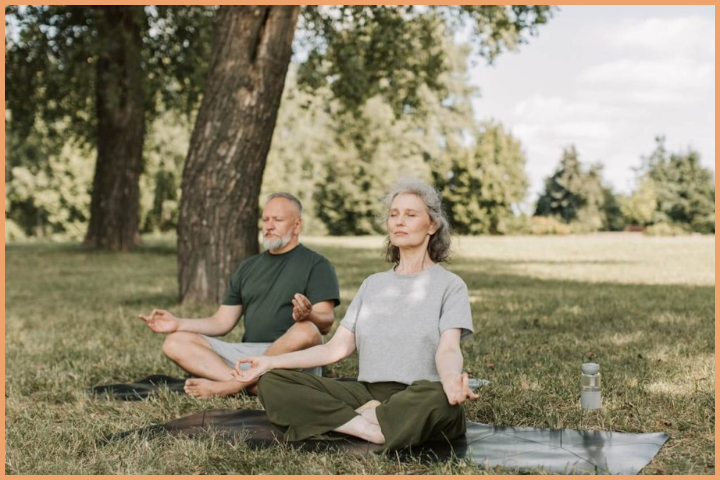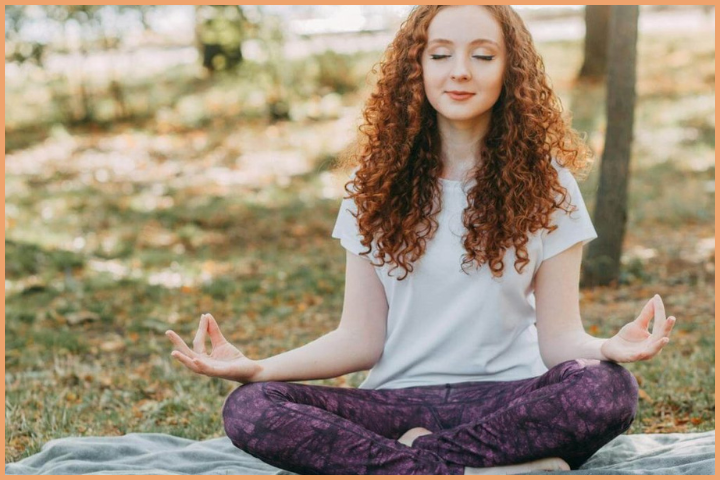In our busy lives, finding peace and connection can be tough. But there’s a simple and powerful way to bring mindfulness into your meditation practice: just focus on your breath. The power of breath harnessed through pranayama- the ancient practice of controlled breathing profoundly deepens your meditation and brings a sense of calm and clarity to your mind and body.
Understanding the Power of Breath
Breath is not just a physical process; it is a bridge between the body and the mind. When we focus on our breath, we anchor ourselves in the present moment. This easy practice of mindful breathing can lower stress, enhance emotional balance, and help us connect more deeply with our inner selves.
Scientific studies have shown that controlled breathing, like pranayama, can positively affect the autonomic nervous system, which controls essential functions like heart rate, digestion, and stress response. Practicing pranayama can trigger the relaxation response, bringing calm to both your mind and body.

Simple Pranayama Techniques to Try
Incorporating pranayama into your daily routine doesn’t have to be complicated. Here are a few simple yet powerful techniques you can try:
1. Diaphragmatic Breathing
Diaphragmatic breathing, often called belly breathing, involves taking deep breaths that fully utilize the diaphragm. To practice, place one hand on your chest and the other on your stomach. As you inhale, let your belly rise, and as you exhale, feel it gently fall. This technique helps you focus on your breath and brings a sense of calm.

2. 4-7-8 Breathing
This technique is a simple way to calm your mind. Breathe in through your nose for a count of four, hold for seven, and then slowly exhale through your mouth for eight seconds. Repeat this cycle a few times to soothe your nervous system and get ready for meditation.
3. Alternate Nostril Breathing (Anulom Vilom)
Alternate nostril breathing helps balance the body’s energy and calm the mind. Close one nostril with your thumb and take a deep breath through the other nostril. Then switch, closing the opposite nostril and exhaling through the open one. Continue alternating for several rounds. This technique is especially effective for clearing the mind before meditation.
How Pranayama Deepens Your Meditation Practice
Pranayama is more than just a breathing exercise; it’s a way to deepen your meditation by creating a calm and focused mind. When you begin your meditation with pranayama, you prepare your mind to settle into a state of peace and presence. The rhythmic nature of these breathing techniques helps quiet the “monkey mind” – the constant chatter that makes you focus more easily on your meditation.

By regularly practicing pranayama, you’ll notice an increased ability to concentrate, reduced stress, and a greater sense of inner peace. This deepens your meditation practice, helping you connect with your inner self and fully experience the benefits of mindfulness.
Tips for Incorporating Pranayama into Your Routine
- Start Small: Begin with just a few minutes of pranayama each day. As you become more comfortable, gradually increase the time.
- Consistency is Key: Try to practice pranayama at the same time each day to establish a routine. This could be in the morning to set a peaceful tone for the day or in the evening to unwind.
- Focus on the Breath: During pranayama, focus your attention on your breathing. If your mind wanders, gently bring it back to your breathing.
- Combine with Meditation: Use pranayama as a prelude to your meditation practice. This combination can help you enter a deeper state of mindfulness.
Conclusion
The power of breath through pranayama is a simple yet profound way to enhance your meditation practice and bring balance to your life. Bringing these techniques into your daily routine may help you cultivate a deeper sense of calm, clarity, and connection with your inner self. Whether you are new to meditation or looking to deepen your practice, pranayama offers a powerful tool for spiritual and mental well-being. Embrace the power of breath, and discover how it can transform your meditation practice and your life.

